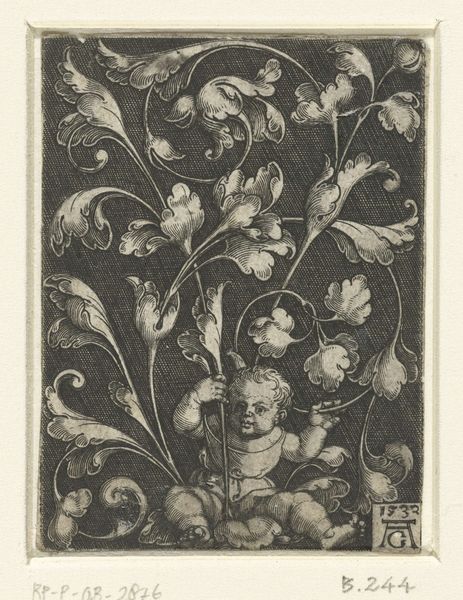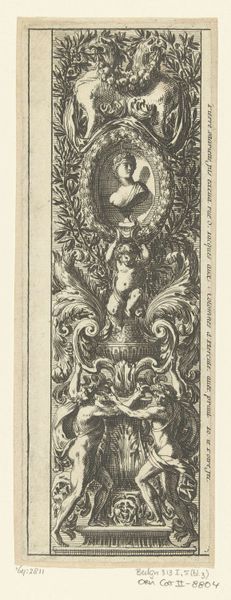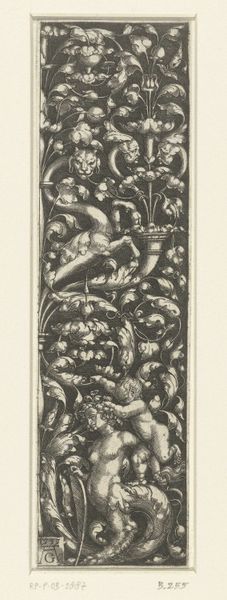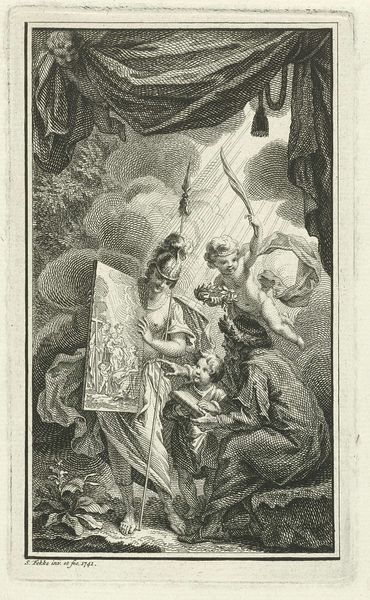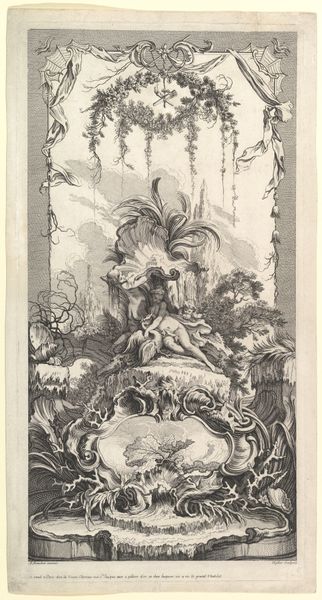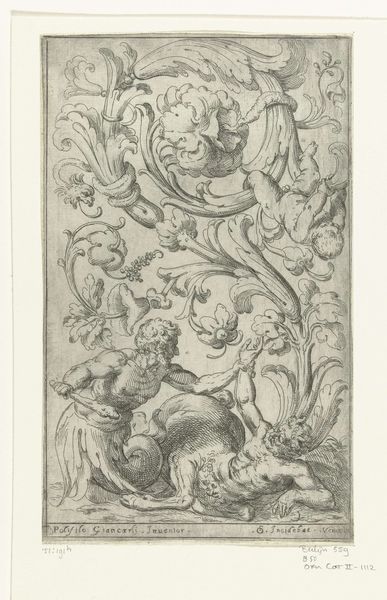
print, etching, engraving
#
allegory
#
baroque
# print
#
etching
#
old engraving style
#
figuration
#
limited contrast and shading
#
ink colored
#
line
#
pen work
#
decorative-art
#
engraving
Dimensions: height 220 mm, width 47 mm
Copyright: Rijks Museum: Open Domain
Editor: So, this is "Panel with Trophy of Arms and Bust of a General," a print by Jean Lepautre, dating from before 1667. The Rijksmuseum holds it. It's incredibly detailed. I’m immediately struck by how busy it is, almost overwhelming with the sheer volume of figures and decorations. What are some of the prominent symbols you see here? Curator: The armament trophy, for example – the piled-up weapons and armor – signifies victory and martial power. It’s not just about brute force, though. Consider its decorative treatment, entwined with foliage and playful cherubs. Does this contrast affect how you understand it? Editor: Definitely, the cherubs complicate it. They seem to soften the military symbolism, adding a layer of celebration. Curator: Exactly. These aren't just random adornments; they’re potent symbols themselves, linking back to classical ideals and the glorification of the hero. The bust of the General, framed by this triumphant chaos, gains a sort of immortal status. Editor: So, it's about immortalizing military achievement through symbols and decoration. Are there layers of cultural context that change the meaning? Curator: Precisely. A work like this reflects the values of its time, projecting an image of strength and authority wrapped in beauty and virtue. What sort of message was it meant to communicate? To whom? This fusion says much about the psychology of power. Editor: That's a fascinating way to look at it – a psychological portrait expressed through symbolism. I initially saw only the surface chaos, but now I see its underlying order and purpose. Curator: Visual language holds the past. When deciphered, you will understand collective identities, beliefs, and feelings from then and now.
Comments
No comments
Be the first to comment and join the conversation on the ultimate creative platform.



